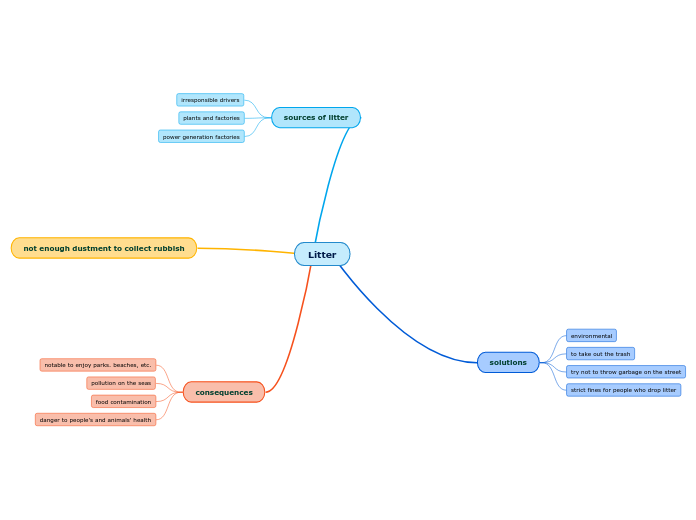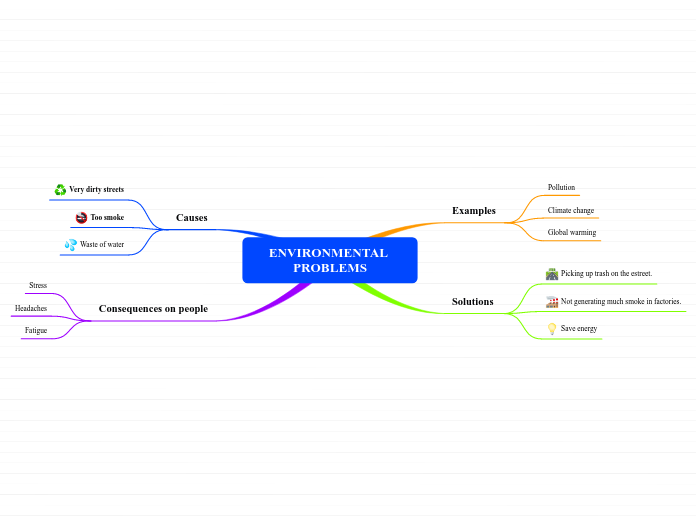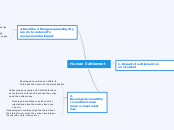Water Pollution in the Great Lakes
Long-term and Short-term Effects:
Short Term Effect: When contaminants enter the Great Lakes, it affects the waterways, humans, and animals living in the water or near the water. As an example, if chemicals find their way into the water supply for the residents in cities near the Great Lakes that people rely on for drinking and sanitary reasons, it will be toxic and people will no longer be able to use it. In the short term, chemicals from industrial and agricultural processes can significantly affect water supplies.
Long Term Effect: Chemical containing nitrogen and phosphorous are created and will cause an algae bloom. As the excessive algae decay, dissolved oxygen is consumed and the overall quality of the water is affected negatively, as well, the aquatic species die because of lack of oxygen. When long-term exposure to contaminants in the water of the Great Lakes, it can cause native species to die. In addition, when emissions from industrial plants enter the atmosphere, they can produce acid rain. Acid rain is caused by toxic emissions entering the atmosphere, and it can negatively impact a whole ecosystem. Acid rain will enter the lakes and contaminant the water and kill the aquatic species, which makes it a long term effect as it is significant.
Reduction: What Can Citizens do to help?
1. Use reusable water bottles.
Plastic water bottles end up in the streets, in trash bags, and finally in landfill, where they are left to decompose, also polluting the environment. These bottles can also end up disposable bottles that end up floating down a river, in a lake, or in the ocean.
Specifically, they could float down into the Great Lakes, further polluting the water.
2. Wash your car on the lawn.
Many pollutants are rinsed from cars during the washing process, and by washing on the lawn, the amount of pollutants that enter into the street drain and then to the lakes are limited by the plants.
3. Dispose of hazardous chemicals properly.
Cleaners, paints, and other chemicals. The idea that the chemical will be diluted and will not be a problem is false.
4. Reduce, Reuse, Recycle
Reduce the amount of items you consume. Always reuse items rather than use disposable. Always try to use recyclable items.
5. Use lawn and garden chemical carefully and sparingly.
Lawn and garden chemicals are only to be used when they are needed. Use a soil test only if there is a presence of an issue.
6. Reduce auto emissions
-Public transportation
-Bike
- Walk
Canadian initiatives:
What is being done to help?
Since 2010, the Government of Canada provides $8 million per year and adds to a previous commitment of $48.9 million to help reduce pollution in Areas of Concern, including the Great Lakes.
Currently, many state agencies and organizations are working to clean up the lakes of harmful pollutants and contaminants that affect the ecosystem health.
In the year of 2012, the United States and Canada created the Great Lakes Water Quality Agreement in hopes of protecting and preserving water, as well as improving the overall quality of the water. Canada and the United States have identified harmful contaminants that are being released into the Great Lakes. Both countries have worked to limit the excessive growth of algae by putting significant limits on fertilizers that are used by farmers.
Human Contribution:
Humans are the main cause of water pollution: expelling industrial waste; climate change, and deforestation, which causes sediments and bacteria to appear under the soil and therefore contaminate groundwater. In the same way, the pesticides used in agricultural fields leak through the underground, which is also as a result of oil spills.
Agriculture:Agricultural processes use a large amount of water from the Great Lakes, also seriously polluting the water. Fertilizers, pesticides, and animal waste from farms wash bacteria and many viruses into waterways, every single time that it rains. In addition, algae blooms which are toxic to animals and humans are caused by an excess of nitrogen and phosphorus in the air.
Sewage and waste: Water that is used comes from sinks, showers, and toilets and from industrial, and agricultural activities (such as metals, and solvents). The term also includes stormwater runoff, which occurs when rainfall carries road salts, oil, and other important chemicals into waterways. Most of the wastewater flows back into the environment without being treated or reused. In Canada, wastewater treatment facilities process about 25 billion gallons of wastewater per day. The nitrogen, phosphorous, and other pathogens are reduced in the water treatment facilities, before bringing the treated water back into waterways.
:
Oil Pollution:Most cars drip oil onto the ground, usually on concrete, and that oil ends up leaking into the Great Lakes. The oil builds up on the asphalt and, when it finally rains, the water expels large amounts of oil into the Great Lakes. Oil spills often also come from industrial processes, and when companies are done with the oil, they throw it away into the water of the Great Lakes. This oil affects the quality of the water, and humans and animals around it.
Major Sources of Contaminants:
Chemical Contaminants:
The Great Lakes are under significant threat of chemical pollution, coming from chemical contaminants that are exposed to the water of the lakes, and thus, damaging the overall quality of the water.
Effects of Chemical Contaminants
Chemical pollution in water has a significant effect on the users of the water and the ecosystem of the water in the Great Lakes. In the wildlife, near the bodies of water, contaminants can cause mutations and irregular reproduction. Pesticides also possion many aquatic species in the Great Lakes. Metals and solvents slow the development and are the reasons for the death of many species living in the water, as they are extremely toxic. Humans and animals are both affected by the increasing mercury levels in the aquatic species. The main cause for human mercury exposure is the consumption of fish from the Great Lakes, which are contaminated by chemicals. Contact with these industrial chemicals and pesticides are dangerous to humans, as it can lead to cancer, and birth defects/infertility.
Where do the Chemical Contaminants Originate from?
Industrial or manufacturing sites and farmland are where most of the chemical contaminants in the Great Lakes come from. Water will become contaminated once the metals and solvents from industrial processes are released into the water of the Great Lakes. In terms of farmland, pesticides are mainly used, and they affect the water because the runoff of pesticides are put into the Great Lakes. Specifically, some of these pesticides are dichlorodiphenyltrichloroethane and other significant dioxins. Pharmaceuticals are also considered to be of great concern because substances such as antibiotics, and steroid hormones are being thrown into groundwater, which will lead to significant effects on humans. Other chemicals including fire retardants, and polybrominated diphenyl ethers are present in the Great Lakes and are extremely bioaccumulative and toxic.
Biological Contaminants
In terms of biological contaminants, nutrient pollution is one of the main processes that contributes to pollution in the Great Lakes. There is an extensive amount of nitrogen and phosphorous in the Great Lakes, which also results in growth of algae.
Effects of Nutrient Pollution
Loss of nutrients in the soil around the Great Lakes and excess nutrients in the water have been linked to the horrible water quality in the Great Lakes. Contaminants including phosphorus and nitrogen, cause an increase in the excessive growth of algae, leading to increased costs for water treatment facilities to help the Great Lakes. The lakes are consumed of oxygen, also threatening the lives of species living in the water, as the over-production of nutrients leads to hypertrophication in the lakes.
Where does Nutrient Pollution come from?
In terms of agriculture, nitrogen and phosphorus pollution is caused by excessive fertilizer, and soil erosion. In addition, stormwater and wastewater also result in biological contamination in the Great Lakes. Specifically, stormwater carries many pollutants into local waterways, as it runs across many surfaces, which also leads to wastewater. Water also runs through waterways because some sewage systems cannot remove all nitrogen and phosphorous. For humans, many household items carry levels of pollutants and these items turn into harmful runoff during rainy weather.
Physical Contaminants
Plastic pollution is one of the main sources of physical contaminants that are polluting the Great Lakes. Studies have found that around two million pounds of plastic enter the Great Lakes every year.
Effects of Plastic Pollution
Studies have shown shockingly high amounts microplastics in all five of the Great Lakes. Microplastic fragments have been found in drinking water and even beer, and this is extremely dangerous for humans and aquatic species. For species living in the Great Lakes, the microplastics and microbeads travel up into their food chain, and they can affect humans as they can absorb and seep into their circulatory system and circulate in the blood.
Where does Plastic Pollution come from?
Fragments that are extremely small and almost impossible to clean up, or microplastics, are the most common source of plastic that are floating in the Great Lakes. Although they are very small sources of plastic, they still pose significant effects on the Great Lakes, as they are consumed by aquatic species. The main use of these plastic are in shampoo products, and because of their size, it is hard for the plastic to be affected by the sewage treatment facilities, so they enter the Great Lakes.









